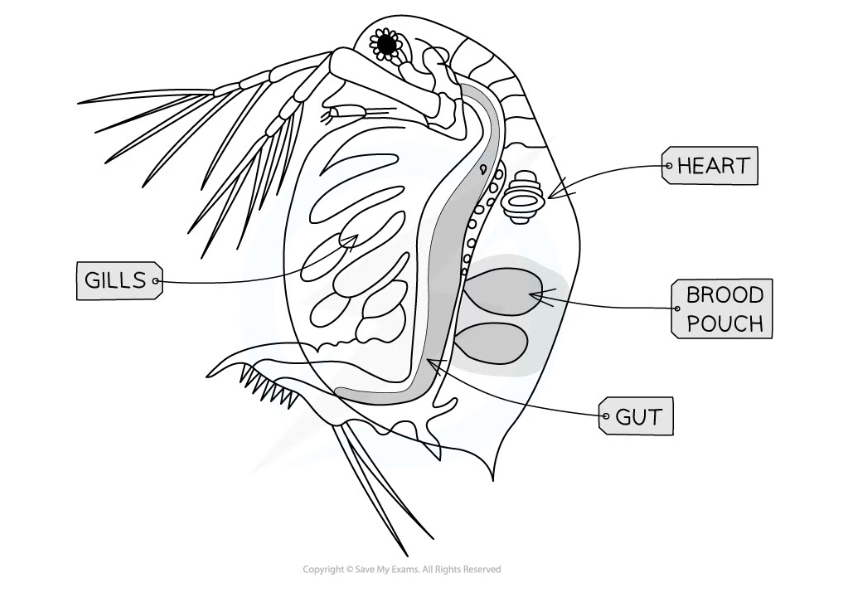- 翰林提供学术活动、国际课程、科研项目一站式留学背景提升服务!
- 400 888 0080
Edexcel A (SNAB) A Level Biology:复习笔记1.1.6 Investigating Heart Rate
Investigating Heart Rate
- There are a wide range of factors that influence the heart rate of an organism
- Experiments can be designed to investigate the effect of a named variable on an organism's heart rate
- These experiments are commonly done using invertebrates, e.g. Daphnia, as well as vertebrates, e.g. humans
- Care needs to be taken during these experiments to ensure that no test subjects are harmed
- Some of the factors that can influence heart rate include
- Drugs
- Caffeine
- Alcohol
- Sex i.e. male or female
- Weight
- Height
- Temperature
- Diet
- Dehydration
- When designing experiments investigating a single factor, it is essential to control other variables
- Heart rate investigations can be used to study the relationship between heart structure and function
Practical: The Effect of Caffeine on Heart Rate in Daphnia
- Daphnia, also known as water fleas, are small aquatic invertebrates
- They are suitable for investigating heart date due to having transparent bodies; their internal organs, such as the heart, can be observed using a light microscope
- It is possible to investigate the impact of caffeine on the heart rate of Daphnia by placing them in a caffeine solution on a microscope slide and counting their heart beats
 Daphnia internal organs can be viewed through a light microscope
Daphnia internal organs can be viewed through a light microscope
Apparatus
- Light microscope
- Cavity slide
- Culture of Daphnia
- Pipette
- Caffeine solutions at a range of concentrations
- Distilled water
- Stop watch
Method
- Prepare five different concentrations of caffeine solution and a control solution of distilled water
- The serial dilution technique could be used here
- Add some pond water into the well of a cavity slide and add three drops of distilled water
- Select a large Daphnia and use a pipette to carefully transfer it to the cavity slide
- You can also use a Petri dish if you do not have access to a cavity slide
- Place the cavity slide onto the stage of a microscope and observe the animal under low power
- The beating heart is located on the dorsal side just above the gut and in front of the brood pouch
- Use a stopwatch to time 20 seconds, and count the number of heart beats
- The heart beat of Daphnia is very rapid, so you can count the beats by making dots on a piece of paper
- Count the dots and express heart rate as number of beats per minute
- Multiply by three to convert beats per 20 seconds into beats per 60 seconds
- Return the Daphnia to the stock culture
- Repeat steps 3-7 with at least 5 other Daphnia individuals
- Repeat steps 3-8 with different caffeine concentration solutions
Variations
- You can also investigate the effect of
- Temperature
- Other chemicals such as alcohol (1% ethanol solution)
Results
- To analyse your results it is best to draw a graph
- Take an average of the heart rate repeats for each caffeine concentration
- Plot average heart rate (y axis) against caffeine concentration (x axis)
- The graph should show a positive correlation; as caffeine concentration increases, heart rate increases
Ethical considerations
- Although they are simple organisms that may not 'suffer' in the same way as animals with more developed nervous systems, Daphnia still deserve respect
- They cannot give consent to be studied
- They cannot express pain
- Some people believe it is more ethical to experiment with invertebrates than vertebrates as they have less sophisticated nervous systems and may not feel pain in the same way
- Care can be taken to minimise potential harm by
- Animals should be handled gently
- Examination periods should be kept as short as possible
- Animals should be returned promptly to the holding tank after being examined
- This is in line with ethical approaches that are appropriate to field work where pond animals are returned to their habitat after observations have been made
- Extreme ranges of the variables being tested should be avoided, e.g. extremes of temperature or strong caffeine solutions
转载自savemyexams

最新发布
© 2025. All Rights Reserved. 沪ICP备2023009024号-1









